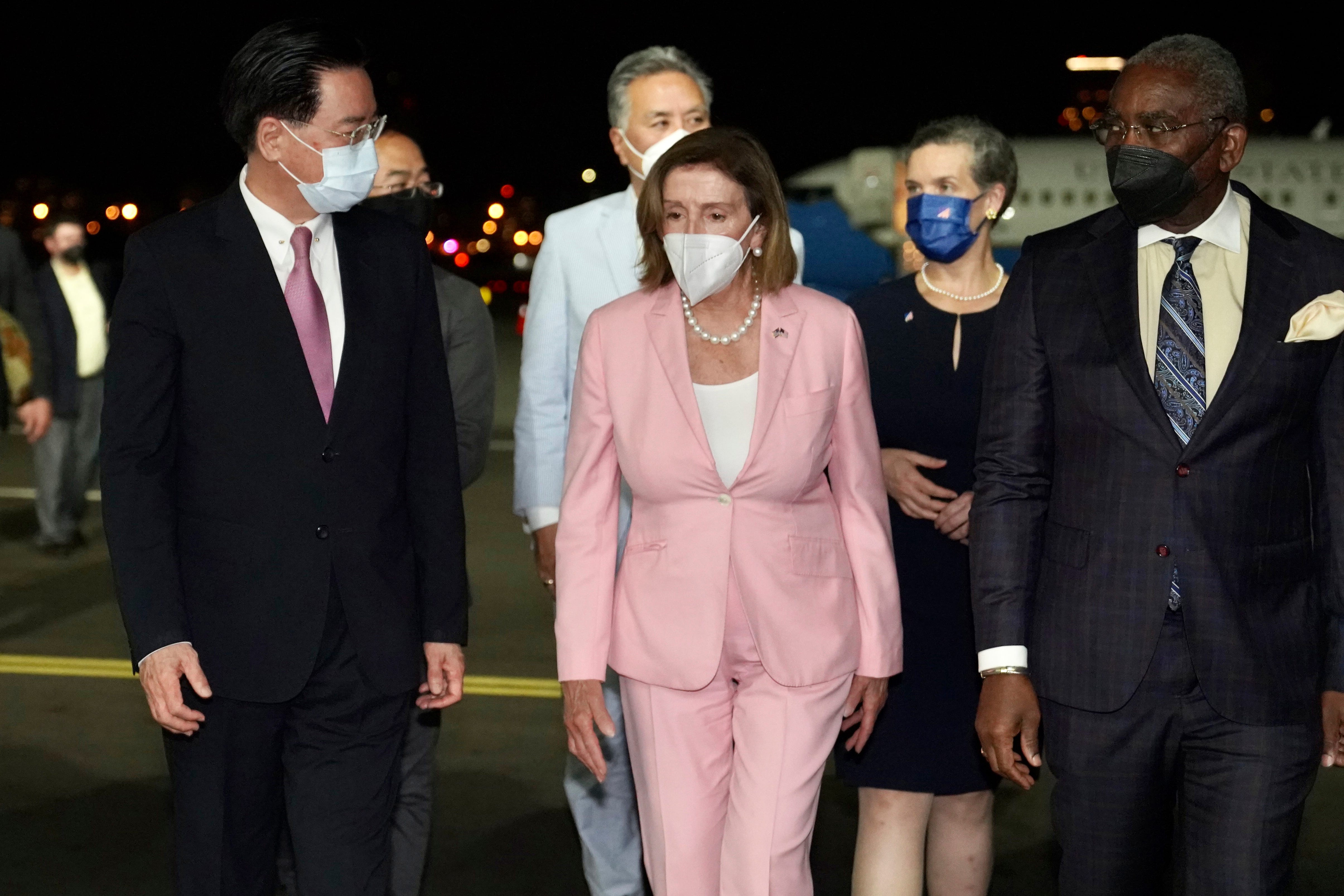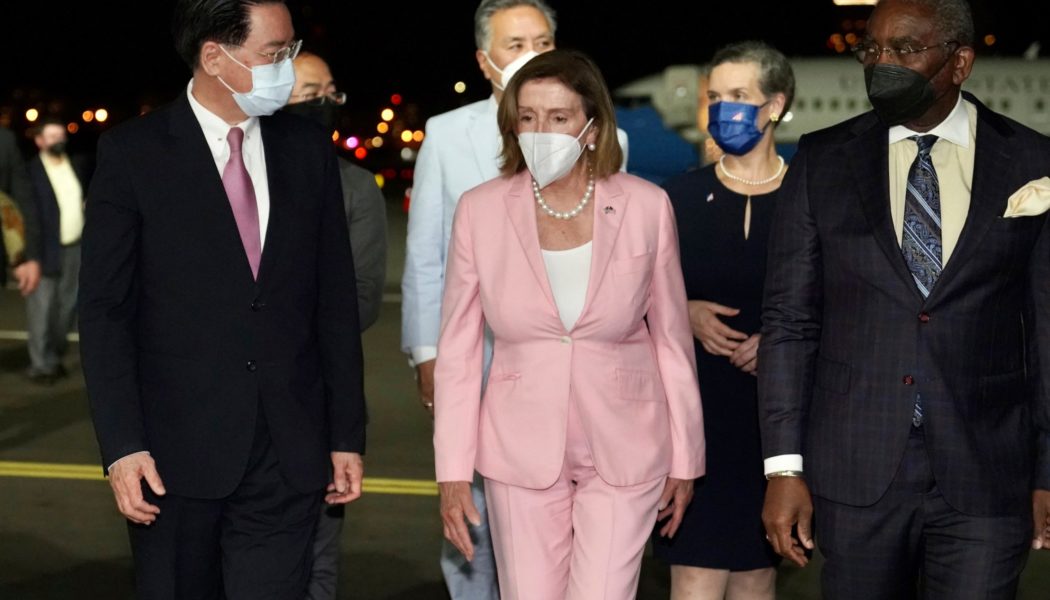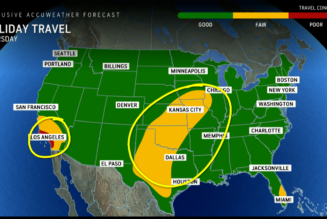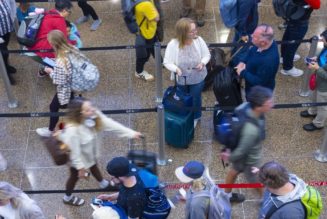
Taxpayers saved on travel bills during the pandemic as Congress dramatically ramped down its foreign expenses — but those trips are back at a rapid clip.
In recent days senators and representatives lifted off for Germany, India, the United Arab Emirates and several stops in Africa.
First-class commercial airfare and accommodations for congressional representatives and their staff for official travel is covered by the Treasury Department, with virtually no limits. Those bills trickled to about $1.3 million in fiscal year 2021 — but ballooned back to nearly $15 million last year.
That doesn’t account for the hundreds of trips for which the military provides transportation; the costs of using military aircraft are never disclosed.
Lawmakers take the trips – often derided as junkets – to confer with foreign officials, visit U.S. military installations and observe overseas projects funded by the U.S. government. Congress does not have to approve the spending for foreign travel and there is no set dollar limit per day, trip, office or individual.
Craig Holman, a government affairs lobbyist for Public Citizen, a consumer advocacy organization, said the taxpayer-funded trips are less problematic than privately backed tours, but still lack basic transparency.
“Clearly that $15 million last year is not the whole picture because of undisclosed use of military travel and generally we have a lack of disclosure,” Holman said. “We don’t really know how taxpayer dollars are being used.”
Which trips and members of Congress racked up the largest tabs?
Congressional committees report trips in error-riddled tables printed in the Congressional Record. USA TODAY standardized and analyzed figures from last year for a glimpse of the biggest expenses.
Individual military branches collect detailed receipts for delegation trips, but drag their feet in providing that information to the public. USA TODAY only recently received a tranche of U.S. Navy documents via the Freedom of Information Act covering travel from in 2014 to 2016.
Those itineraries include detailed dinner tabs and show members of Congress bringing along their spouses on many trips, despite official rules barring them from going except in “unique cases.” Spouses reimburse the government for food, but not for shared hotels or military travel.
Based solely on the limited expense reports listed in the Congressional Record, Democratic Rep. Gregory Meeks, then chairman of the House Foreign Affairs Committee, took the most expensive trip last year.
In May, he traveled to Moldova, Switzerland, Czech Republic and Austria as part of the World Economic Forum in Davos. The U.S. also sent a bipartisan delegation of eight senators and 12 representatives who each reported their own expenses separately.
Meeks’ trip accounting came to more than $111,000.
Andrei Vasilescu, a spokesman for the minority Democrats on the committee, said the trip was a complicated itinerary. Costs grew, he said, after military aircraft were unable to transport members and they faced extra housing costs due to the location. The travel carries no requirement to produce public reports about accomplishments.
“The trip was an important time to speak with leaders about the global refugee crisis, food shortages and the work of the International Atomic Energy Agency,” Vasilescu said.
Meeks was the most frequent traveler in the House last year with trips to: Poland, Côte d’Ivoire, Tanzania, Liberia, Sierra Leone, Ukraine, Belgium, Finland, Turkey and Greece.
Republican Sen. Roy Blunt was the most frequent traveler through three quarters of the year last year, the most recent data available. Often committees dealing with the budget, foreign affairs and military contain the frequent fliers.
Bottles of wine and Waikiki Beach in expense reports
Records obtained by USA TODAY showed how in 2015, Sen. Lindsey Graham’s congressional trip was blown off course by a snowstorm so he hosted Sens. Chris Coons and Mark Warner at the upscale Magnolias restaurant in Charleston with a $538.97 tab including a $100 tip. Graham staffers say they reimbursed the government for the three bottles of wine they drank.
Last week, Graham led a bipartisan group hopscotching from Munich to Zambia, South Africa, Botswana and Morocco. An itinerary obtained by the news outlet Punchbowl shows time carved out for Victoria Falls and “conversation observations” which appeared to be safaris that called for “rugged casual” attire.
At the 2016 Munich Security Conference Sen. John McCain led a delegation of 45 people on the military’s dime, requiring two jets. The manifest documents included members of Congress, thinktank leaders, foreign policy journalists and corporate leaders.
In 2015, Sen. John Cornyn took a group from the Senate Judiciary Committee to Hawaii. They feasted on a $2,445 dinner at Surf Lanai in Honolulu that included seven bottles of wine plus beer and margaritas. Staff for Cornyn declined to comment on the trip, but pointed to rules that indicate per diem rates based on location and mandate members reimburse the government for alcohol.
In May that year, Republican Rep. Michael McCaul took three fellow members of Congress and their spouses and staff through Israel, Iraq, Kuwait, Turkey, Berlin and France. A spokeswoman defended the costs and pointed to the need for examining threats to the United States and counterterrorism efforts abroad.
The trips “provide vital, first-hand information to Members of Congress who have been entrusted by the American people to conduct vigorous oversight,” Leslie Shedd, a House Foreign Affairs Committee spokeswoman, said in an email. “This is doubly true for Members who serve on national security committees, and whose oversight authority extends to U.S. operations overseas.”
Pelosi trip shows lack of cost transparency
Then-Speaker Nancy Pelosi was the second-most frequent flier in Congress last year. That included her much-publicized trip to Taiwan in August that drew criticism from Chinese officials.
Pelosi boarded a US Air Force-operated Boeing C-40C on her flight into Taipei from Kuala Lumpur. For other uses, the Air Force charges about $8,000 per hour to operate the 737-style jet. The flight became one of FlightRadar24 most tracked in history.
Despite that, the Congressional Record reflects only $283.67 in expenses for the trip, not including the military transports or other shrouded expenses. Pelosi also itemized her trips to: the United Kingdom, Germany, Israel, Singapore, Poland, Japan, South Korea, Italy, Armenia, Croatia and Egypt last year.
Pelosi’s communications staff did not respond to questions about her trips.
Are Congressional trips worth the money?
Setting aside the two pandemic years, travel expenses in 2022 were about average for the last decade.
Congressional travel expenses spiked in 2016 to more than $19 million when new intelligence committees helmed by Republicans sought to get out into the field. The year before, Rep. Devin Nunes, R-Calif. oversaw a near doubling of the House Intelligence Committee travel to almost $2 million.
Col. Nate Cook, a former Senate Liaison Division chief for the U.S. Army led worldwide travel to military installations for Congress for three years, before retiring in 2021. Cook said there’s no replacement for in-person inspection of how defense priorities are being funded. However, he noted that business went on as usual during the pandemic, even without much Congressional travel.
“COVID basically ground travel to a halt and we still appropriated the Army without a hitch,” Cook said. “If we went to nothing and still got things done does that mean we could have gone without spending that money?”
Nick Penzenstadler is a reporter on the USA TODAY investigations team. Contact him at npenz@usatoday.com or @npenzenstadler, or on Signal at (720) 507-5273. Tom Vanden Brook has covered the Pentagon since 2006. Contact him at tvbrook@usatoday.com.








